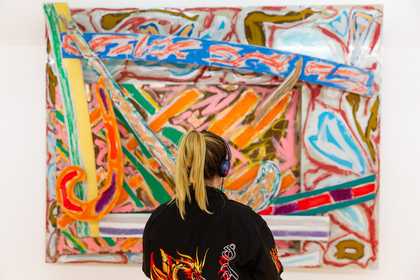Take a fresh look at highlights from the nation's collection of modern art
What links a Lorna Simpson photograph to a video projection by Hito Steyerl? Explore the links between artists and artworks in our updated display of the Tate collection, Constellations.
At the heart of each constellation is a ‘trigger’ artwork, chosen for its profound and revolutionary effect on modern and contemporary art. Surrounding the trigger works are artworks that relate to it and to each other, across time and location. Visitors to constellations can enjoy an imaginative display of artworks by Henri Matisse, Alice Neel Joseph Beuys, Sarah Lucas, Nicholas Hlobo and many, many more.
Accompanying each constellation is a word cloud (to be found under the information panels within each room). Made up of a set of key words that suggest the connections between them, these clouds offer a visual snapshot of the shared characteristics within each constellation, with those traits that are most common appearing larger.
Be the first to hear what’s happening at Tate Liverpool by signing up to our monthly e-bulletin.
Tate Liverpool + RIBA North
Level 1, Level 2

